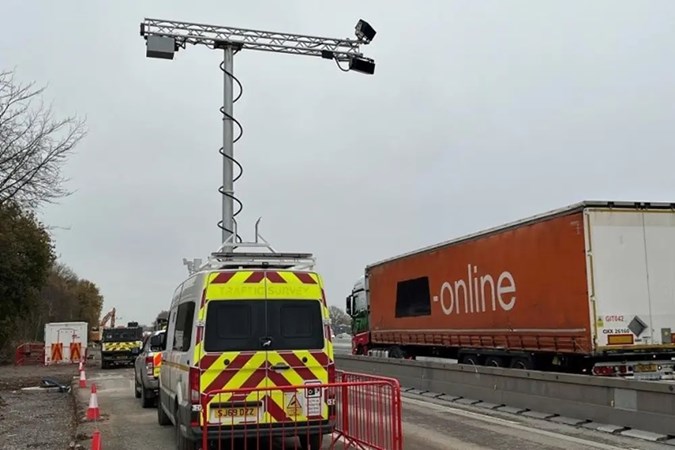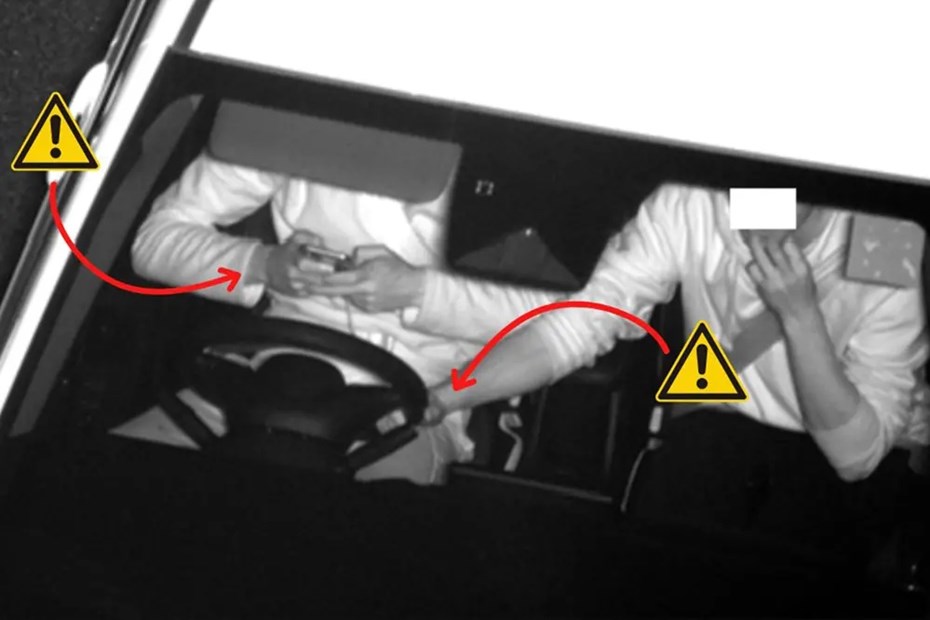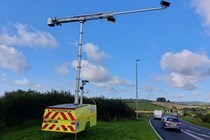A taste of things to come in surveillance technology. Ten police forces across the country are currently rolling out new Artificial Intelligence (AI)-enabled cameras, which can automatically detect drivers not wearing a seatbelt or using mobile phones while on the move.
The new AI cameras is mounted to an official vehicle or trailer, and has multiple cameras. These give differing views of the driver and their passengers for the increased likelihood of being photographed doing things they shouldn’t. They’re more difficult to spot than the current range of yellow-painted speed cameras widely used across the country.
The National Highways trial was first kicked off in 2021, when drivers spotted driving without seatbelts or on the phone by police using the technology were sent warning letters informing them of the dangers of their behaviour.
How do these new AI camera set-ups work?
In partnership with AECOM, the research is now being extended to work with more police forces. These trials will show how the technology could work and help steer a possible future roll-out across the country. The latest trial will run until March 2025 and is underway now.
The new type of technology captures footage of passing cars, taking a selection of digital photos of the driver. Images of drivers transgressing the law are then passed to police for consideration on any action to be taken. Drivers can be fined up to £500 for not wearing a seatbelt in addition to penalty points. Using a mobile phone while driving can result in a fine of up to £1,000 and six penalty points.
The police forces taking part in the trial are: Durham, Greater Manchester Police, Humberside, Staffordshire, West Mercia, Northamptonshire, Wiltshire, Norfolk, Thames Valley Police and Sussex.
New technology driven by safety
England’s motorways are already among the safest roads globally and National Highways has an ambitious strategy to further improve safety over the coming years. National Highways Head of National Road User Safety Delivery, Matt Staton, says: ‘We know that distracted driving and not wearing seatbelts were key factors in a high number of incidents that resulted in people being killed or seriously injured.’
Dr Jamie Uff, is the Technical Director at AECOM and is the lead research professional who has been managing the deployment of the technology. He says: ‘Our work to date has highlighted the scale of the issue, has shown that technology can play a valuable role, and that there is much still to be understood about driver behaviour given the new insights gained.’
Although the research is funded by National Highways, enforcement of motoring offences will remain a matter for individual police forces.

What this means for you
If you were caught in the first trial, you’ll already know how effective it is at catching people using their phones while driving. You won’t have been prosecuted for that – just warned – but if it happens again, you will be. And with a potential maximum fine of £1,000 (£2,500 if you’re driving a lorry or bus), that’s a lot to lose.
Be in no doubt, this is a shape of things to come – you’re going to be increasingly spied upon as you drive in the future, so the best rule of thumb is safely mount your phone, and make sure you and your passengers are belted up.
Photo: Motorcycle News
For all the latest advice, news and finance deals, sign up to the Parkers newsletter here.











